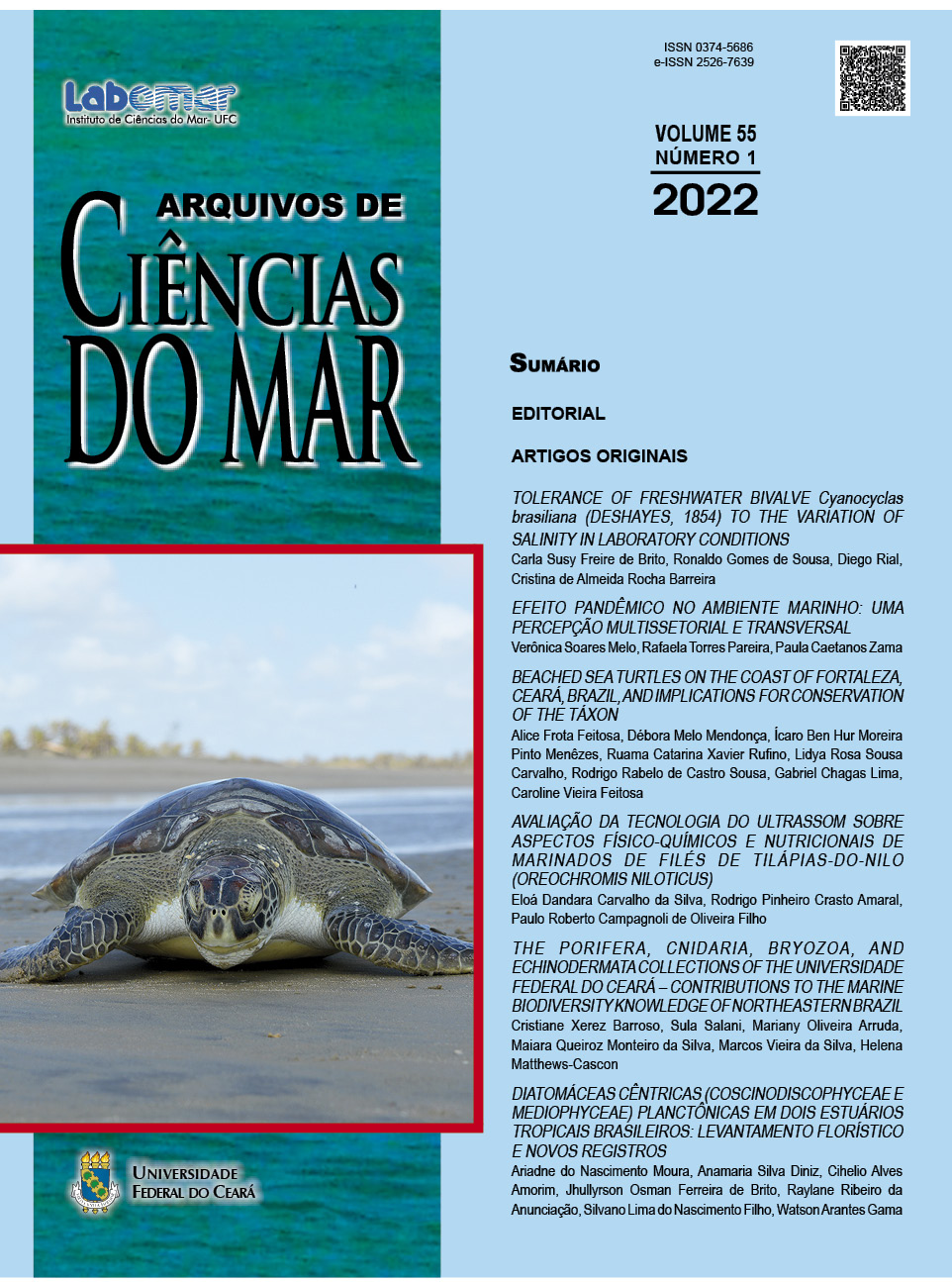DIATOMÁCEAS CÊNTRICAS (Coscinodiscophyceae e Mediophyceae) PLANCTÔNICAS EM DOIS ESTUÁRIOS TROPICAIS BRASILEIROS: LEVANTAMENTO FLORÍSTICO E NOVOS REGISTROS
Planktonic centric diatoms (Coscinodiscophyceae and Mediophyceae) from two tropical Brazilian estuaries: floristic survey and new records
DOI:
https://doi.org/10.32360/acmar.v55i1.71927Abstract
Estuaries are highly productive and dynamic ecosystems in which phytoplankton is the main primary producer and centric diatoms are the most abundant group seen in marine and estuarine phytoplankton. In this context, the aim of this study was to carry out a taxonomic study of the planktonic centric diatoms (Coscinodiscophyceae and Mediophyceae) from two tropical estuaries located in Northeast Brazil. This study was carried out before the biggest oil spill impact occurred in Brazil in 2019. Thirty-six taxa were identified, with Mediophyceae as the most representative class with 24 species. Coscinodiscus was the genus with the highest number of species identified, followed by Chaetoceros and Thalassiosira. The species Chaetoceros filiferus Karsten was reported for the first time to Brazil, while Paralia fenestrata Sawai & Nagumo and Shionodiscus endoseriatus (Hasle & Fryxell) Alverson are new records for Northeast Brazil and Thalassiosira
lineata Jousé for Pernambuco state. Descriptions, illustrations, and comments on morphological and metric variations for each taxon were presented. The results highlight the importance of floristic studies for the knowledge of diatom flora in tropical marine environments, besides acting as a crucial study for future research in the studied estuaries.
Keywords: Brazil, marine diatoms, phytoplankton, scanning electron microscopy, taxonomy
Downloads
Published
Issue
Section
License
1. Proposta de Política para Periódicos de Acesso Livre
Autores que publicam nesta revista concordam com os seguintes termos:
- Autores mantém os direitos autorais e concedem à revista o direito de primeira publicação, com o trabalho simultaneamente licenciado sob a Licença Creative Commons Attribution que permite o compartilhamento do trabalho com reconhecimento da autoria e publicação inicial nesta revista.
- Autores têm autorização para assumir contratos adicionais separadamente, para distribuição não-exclusiva da versão do trabalho publicada nesta revista (ex.: publicar em repositório institucional ou como capítulo de livro), com reconhecimento de autoria e publicação inicial nesta revista.
- Autores têm permissão e são estimulados a publicar e distribuir seu trabalho online (ex.: em repositórios institucionais ou na sua página pessoal) a qualquer ponto antes ou durante o processo editorial, já que isso pode gerar alterações produtivas, bem como aumentar o impacto e a citação do trabalho publicado (Veja O Efeito do Acesso Livre).

